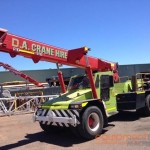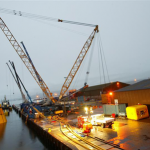Regular maintenance is essential in order to keep the lifting equipment, different machine parts and crane lifting attachments in top shape to ensure efficient and safe completion of all lifting and moving tasks. The inadequate or lack of maintenance can lead to unwanted accidents, employees’ health problems and many other dangerous situations. This can result in reduced productivity and loss of money. Therefore, maintenance must be carried out in all workplaces and industry sectors in order for every large crane and crane lifting attachments to function perfectly.

Accidents most often occur when large cranes and crane lifting attachments are not thoroughly inspected before each use and are not maintained on time. Therefore, if the core of your business requires regular use of cranes and different crane lifting attachments, you must ensure proper and regular maintenance in order to avoid accidents and other dangerous situations. Proper crane and crane lifting attachments maintenance will not only prolong the life of your heavy-duty equipment, but is also the first step towards keeping your employees safe. Take a look at some of the most important crane lifting attachments maintenance tips.
How To Maintain Large Cranes Hooks
Before you use hooks, they must be inspected by a qualified rigger. Immediately remove the hooks for service if you notice some of the following things:
- Gouges, cracks or nicks;
- Malfunction or some damages on the latch;
- Twist going over 10 degrees from plane of unbent hook;
- Wear that exceed 10% of the original dimension;
- Throat opening going over 15%;
- Heat damage;
- Unauthorized repairs
Nicks, cracks, gouges or other damaged parts must be removed and repaired by a qualified person. If removing the affected area causes a loss of more than 10% of the original dimension, the hook must be replaced with a new one. Keep in mind that you cannot repair, reshape or change a hook by heating, welding, bending or burning, unless it is approved by the manufacturer. In case of lifting, make sure that the hook supports the load. The lifting or sling device needs to be properly seated in the bowl of the hook.
Continue reading – Our Large Crane Lifting Attachments Maintenance Tips – part 2


